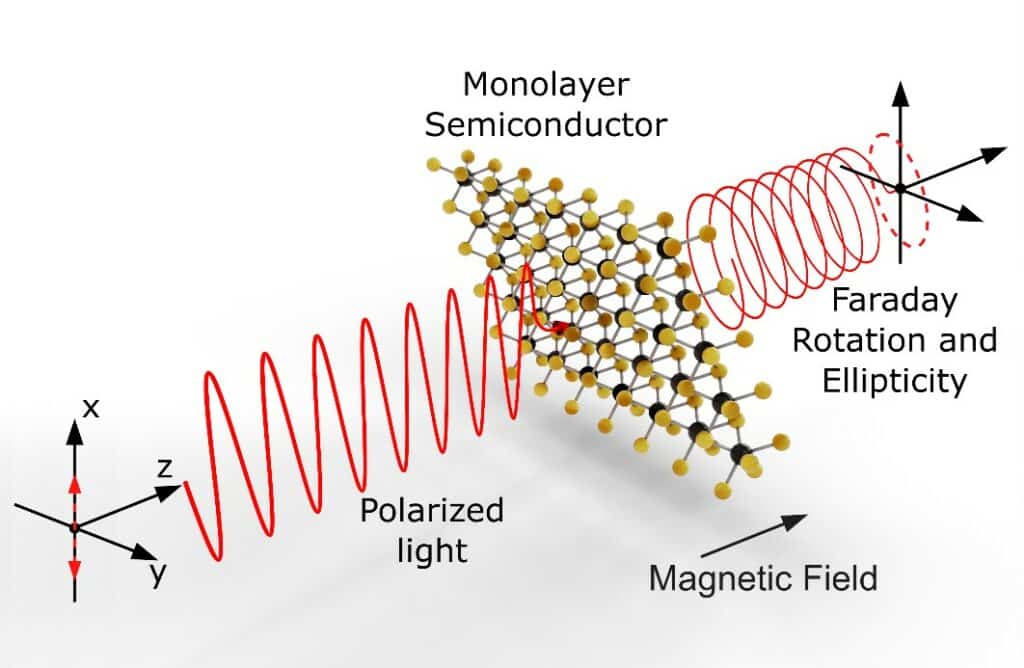People have long understood that, under some circumstances, light behaves like waves. Certain materials allow light to travel through them and cause the wave to twist or shift direction. This characteristic is crucial for “optical isolators” or “optical diodes,” essential components of optical communication networks. Light can travel in one direction, but it cannot travel in the opposite direction.
In a recent study, scientists from Germany and India have found that ultrathin materials such as tungsten diselenide, when subjected to tiny magnetic fields, may change the direction of visible light by a few degrees. They can also rotate the polarisation of visible light by several degrees at certain wavelengths. This property makes the materials useful for microchips. The team includes scientists from the University of Münster in Germany and the Indian Institute of Science Education and Research (IISER) in Pune.
One issue with conventional optical isolators is their size, which ranges from millimeters to centimeters. Because of this, scientists find it challenging to create compact optical systems on circuits similar to those used in everyday electronics. Currently, a computer chip comprises billions of pieces, but optical chips only have a few hundred.
The German-Indian team’s work, however, shows promise. They work with fragile 2D materials far thinner than human hair and have only a few thick atomic layers. A significant step toward downsizing optical systems on chips could result in considerably smaller optical isolators.

Prof Rudolf Bratschitsch from the University of Münster said, “In the future, two-dimensional materials could become the core of optical isolators and enable on-chip integration for today’s optical and future quantum optical computing and communication technologies.”
The group discovered why their discovery is effective: Ultra-thin materials such as 2D semiconductors exhibit significant polarization twisting when exposed to a small magnetic field due to pairs of excitons, which are bound electrons and holes.
Prof Ashish Arora from IISER adds: “Conducting such sensitive experiments on two-dimensional materials is not easy because the sample areas are tiny. For this, we had to develop a new measuring technique around 1,000 times faster than previous methods.”
Journal Reference:
- Benjamin Carey, Nils Kolja Wessling, Paul Steeger, Robert Schmidt, Steffen Michaelis de Vasconcellos, Rudolf Bratschitsch, Ashish Arora. Giant Faraday rotation in atomically thin semiconductors. Nature Communications, 2024; 15 (1) DOI: 10.1038/s41467-024-47294-5
